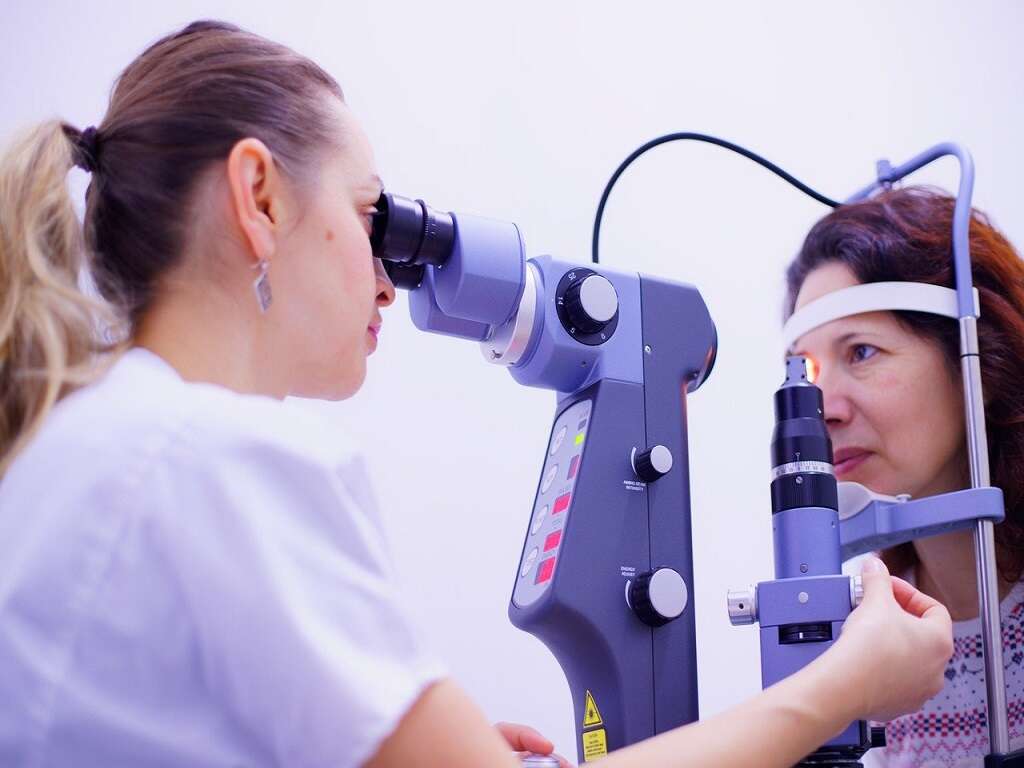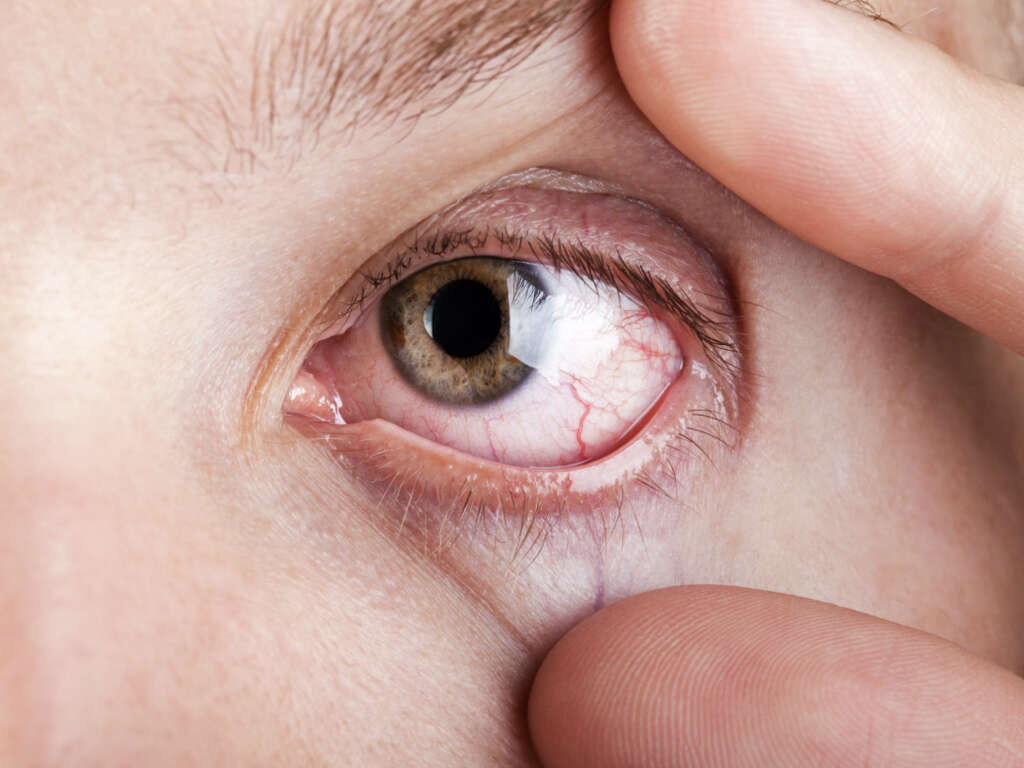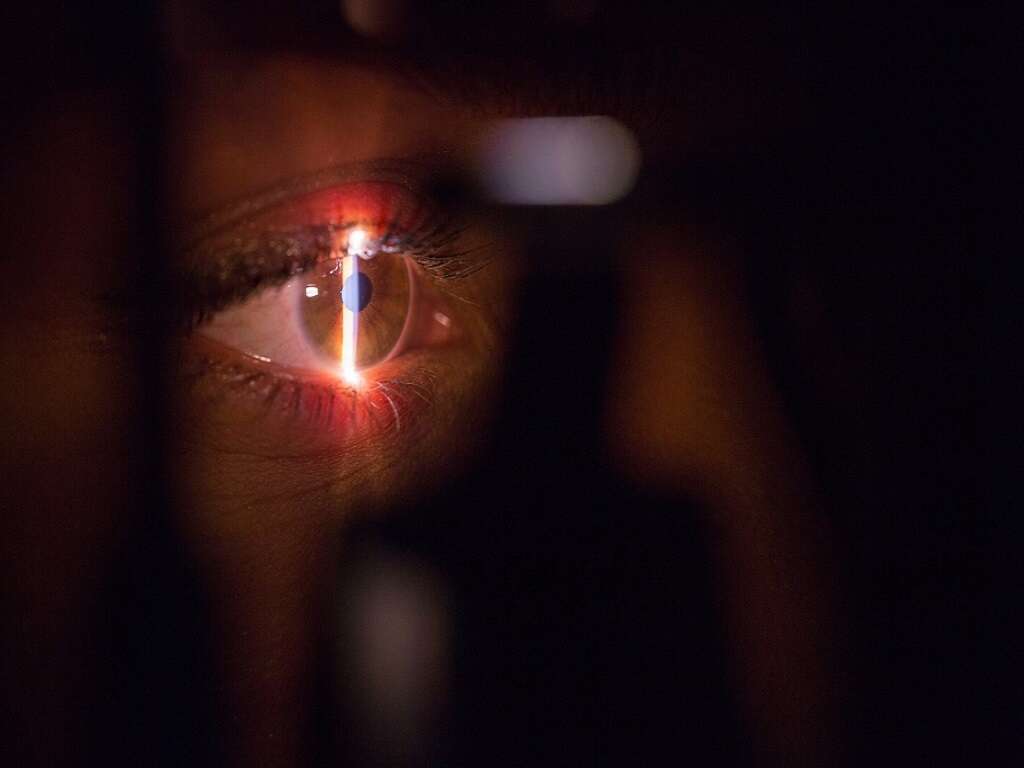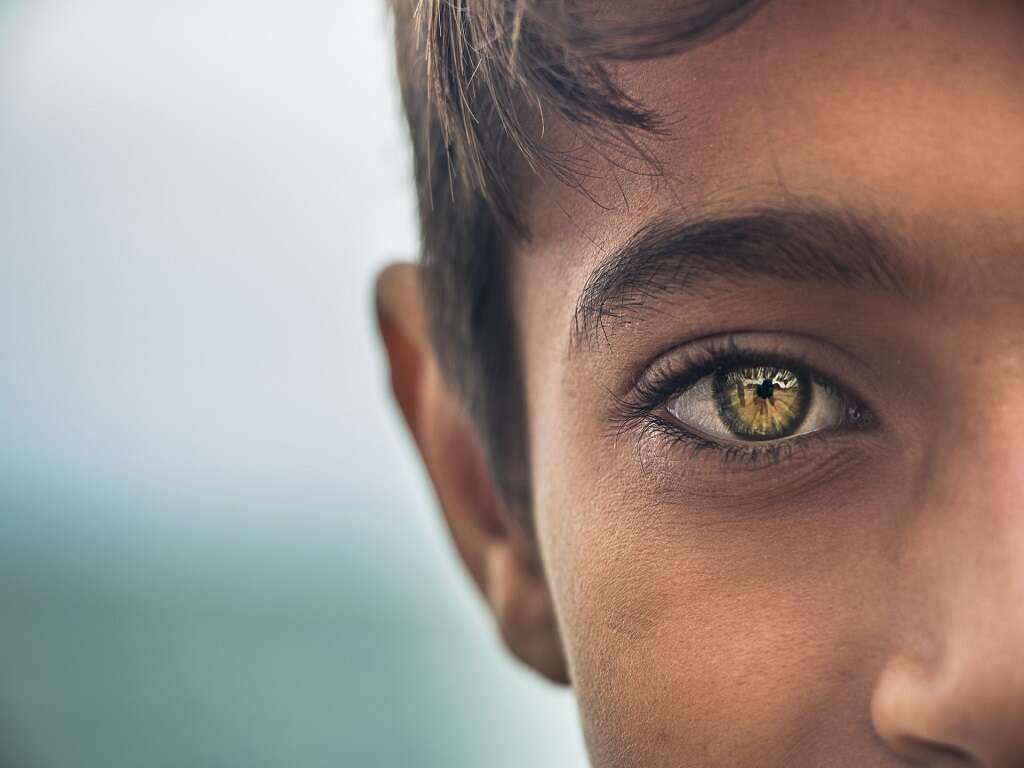Blurry Vision Causes, Treatments & More
 Article Sources
Article Sources
- 1. 'Blurriness.' American Academy of Ophthalmology, 25 Jan. 2021, www.aao.org/eye-health/symptoms/blurriness-2.
- 2. Blurred Vision By Christopher J. Brady, et al. 'Blurred Vision - Eye Disorders.' Merck Manuals Professional Edition, Merck Manuals, www.merckmanuals.com/professional/eye-disorders/symptoms-of-ophthalmologic-disorders/blurred-vision.
- 3. Willacy, Dr Hayley. 'Blurred Vision.' Patient.info, 3 Apr. 2019, patient.info/doctor/blurred-vision.
- 4. 'Nearsightedness: What Is Myopia?' American Academy of Ophthalmology, 22 Dec. 2020, www.aao.org/eye-health/diseases/myopia-nearsightedness.
- 5. 'Common Eye Disorders and Diseases.' Centers for Disease Control and Prevention, Centers for Disease Control and Prevention, 3 June 2020, www.cdc.gov/visionhealth/basics/ced/index.html.
- 6. Boyd, Kierstan. 'What Are Cataracts?' American Academy of Ophthalmology, 26 Feb. 2021, www.aao.org/eye-health/diseases/what-are-cataracts.
- 7. 'Slide Show: Age-Related Vision Problems.' Mayo Clinic, Mayo Foundation for Medical Education and Research, 10 Mar. 2021, www.mayoclinic.org/healthy-lifestyle/adult-health/multimedia/vision-problems/sls-20076758's=2.
- 8. Boyd, Kierstan. 'What Is Diabetic Retinopathy?' American Academy of Ophthalmology, 18 Sept. 2020, www.aao.org/eye-health/diseases/what-is-diabetic-retinopathy.
- 9. 'Diabetic Retinopathy Diagnosis and Treatment.' American Academy of Ophthalmology, 2 Sept. 2020, www.aao.org/eye-health/diseases/diabetic-retinopathy-treatment.
- 10. Boyd, Kierstan. 'What Is Glaucoma?' American Academy of Ophthalmology, 14 Dec. 2020, www.aao.org/eye-health/diseases/what-is-glaucoma.
- 11. Boyd, Kierstan. 'What Are Common Glaucoma Symptoms?' American Academy of Ophthalmology, 9 Oct. 2020, www.aao.org/eye-health/diseases/glaucoma-symptoms.
- 12. Boyd, Kierstan. 'Glaucoma Treatment.' American Academy of Ophthalmology, 12 Dec. 2020, www.aao.org/eye-health/diseases/glaucoma-treatment.
- 13. Boyd, Kierstan. 'Corneal Abrasion and Erosion.' American Academy of Ophthalmology, 17 Sept. 2020, www.aao.org/eye-health/diseases/what-is-corneal-abrasion.
- 14. Porter, Daniel. 'What Is Herpes Keratitis?' American Academy of Ophthalmology, 8 Mar. 2021, www.aao.org/eye-health/diseases/herpes-keratitis.
- 15. 'Computer Vision Syndrome (Digital Eye Strain).' AOA.org, www.aoa.org/healthy-eyes/eye-and-vision-conditions/computer-vision-syndrome'sso=y.
- 16. Boyd, Kierstan. 'What Is Dry Eye?' American Academy of Ophthalmology, 26 Feb. 2021, www.aao.org/eye-health/diseases/what-is-dry-eye.
- 17. Turbert, David. 'What Is a Corneal Ulcer (Keratitis)?' American Academy of Ophthalmology, 1 Apr. 2021, www.aao.org/eye-health/diseases/corneal-ulcer.
- 18. 'Stroke's Effect on Vision.' American Academy of Ophthalmology, 26 June 2017, www.aao.org/eye-health/tips-prevention/strokes-effect-on-vision.
Blurry vision is a common issue in which a person is unable to see clearly or sharply. One or both eyes may be affected, and the blurriness may develop gradually or suddenly. The indistinct vision may be present when viewing objects at close range, at a distance or under all circumstances. Other visual symptoms, such as halos, floaters and decreased peripheral vision, may accompany the blurry vision.
People of all ages may experience blurry vision, although some causes of the issue are age-related. Causes of blurry vision include refractive errors, a disease, physical changes due to age, hereditary disorders and injuries.1‘Blurriness.’ American Academy of Ophthalmology, 25 Jan. 2021, www.aao.org/eye-health/symptoms/blurriness-2.,2Blurred Vision By Christopher J. Brady, et al. ‘Blurred Vision - Eye Disorders.’ Merck Manuals Professional Edition, Merck Manuals, www.merckmanuals.com/professional/eye-disorders/symptoms-of-ophthalmologic-disorders/blurred-vision.,3Willacy, Dr Hayley. ‘Blurred Vision.’ Patient.info, 3 Apr. 2019, patient.info/doctor/blurred-vision.

1. Refractive Errors
The most common cause of blurred vision is refractive errors.2Blurred Vision By Christopher J. Brady, et al. ‘Blurred Vision - Eye Disorders.’ Merck Manuals Professional Edition, Merck Manuals, www.merckmanuals.com/professional/eye-disorders/symptoms-of-ophthalmologic-disorders/blurred-vision. A refractive error occurs when the eye fails to bend light properly, interfering with proper focusing and causing a blurred image.4‘Nearsightedness: What Is Myopia?’ American Academy of Ophthalmology, 22 Dec. 2020, www.aao.org/eye-health/diseases/myopia-nearsightedness.
Myopia, or nearsightedness, causes blurred vision when viewing distant objects, while farsightedness, or hyperopia, causes blurred vision when viewing objects up close. Presbyopia is an age-related condition that results in impaired close-up vision. Astigmatism, caused by distortion in the eye’s lens, may result in blurred vision at any distance. Refractive errors can be corrected with prescription eyeglasses, contact lenses or surgery.5‘Common Eye Disorders and Diseases.’ Centers for Disease Control and Prevention, Centers for Disease Control and Prevention, 3 June 2020, www.cdc.gov/visionhealth/basics/ced/index.html.

2. Cataracts
A cataract is a cloudy area in the lens of the eye that leads to a decrease in vision. This happens as people age, but it can be congenital or occur due to excessive sun exposure, smoking, eye injuries, using certain medications and diseases, such as diabetes. Other cataract symptoms include difficulties with night vision and seeing halos around objects.
If the cataract isn’t severe, a new eyeglass prescription may provide better visual acuity. Cataract surgery resolves the problem by removing the natural lens and replacing it with an artificial one.6Boyd, Kierstan. ‘What Are Cataracts?’ American Academy of Ophthalmology, 26 Feb. 2021, www.aao.org/eye-health/diseases/what-are-cataracts.,7‘Slide Show: Age-Related Vision Problems.’ Mayo Clinic, Mayo Foundation for Medical Education and Research, 10 Mar. 2021, www.mayoclinic.org/healthy-lifestyle/adult-health/multimedia/vision-problems/sls-20076758’s=2.

3. Diabetic Retinopathy
Diabetic retinopathy is a diabetes complication, caused by high blood sugar levels damaging the retina. It can cause blindness if left undiagnosed and untreated. The blood vessels may swell and leak or prevent blood from reaching the retina. Sometimes abnormal cells grow on the retina.
Besides blurry vision, this condition may cause increased numbers of floaters, dark spots in the field of vision and poor night vision. Treatment may involve better blood sugar control, injections of medication into the eye or laser surgery.8Boyd, Kierstan. ‘What Is Diabetic Retinopathy?’ American Academy of Ophthalmology, 18 Sept. 2020, www.aao.org/eye-health/diseases/what-is-diabetic-retinopathy.,9‘Diabetic Retinopathy Diagnosis and Treatment.’ American Academy of Ophthalmology, 2 Sept. 2020, www.aao.org/eye-health/diseases/diabetic-retinopathy-treatment.

4. Glaucoma
Fluid buildup in the front of the eye can cause abnormal pressure that damages the optic nerve and may lead to glaucoma. Primary open-angle glaucoma may cause no pain or symptoms until damage is severe. People with another type of glaucoma, angle-closure glaucoma, may have no symptoms until a sudden attack of blurred vision, halos, eye pain and headaches occur.10Boyd, Kierstan. ‘What Is Glaucoma?’ American Academy of Ophthalmology, 14 Dec. 2020, www.aao.org/eye-health/diseases/what-is-glaucoma.,11Boyd, Kierstan. ‘What Are Common Glaucoma Symptoms?’ American Academy of Ophthalmology, 9 Oct. 2020, www.aao.org/eye-health/diseases/glaucoma-symptoms.
Damage from glaucoma is permanent, so prevention through regular eye exams is critical. Treatment may involve prescription eye drops and laser surgery.12Boyd, Kierstan. ‘Glaucoma Treatment.’ American Academy of Ophthalmology, 12 Dec. 2020, www.aao.org/eye-health/diseases/glaucoma-treatment.

5. Corneal Abrasion
Blurry vision may be a sign of a corneal abrasion, a scratch or scrape on the cornea caused by makeup brushes, fingernails, vigorous rubbing or extremely dry eyes. The eye may be sensitive to light, red, watery and painful.
Treatment may include rinsing the eye with clean water or a saline solutions, moisturizing or antibiotic drops or ointments, dilating eye drops for pain relief and use of an eye patch. The abrasion usually heals within a week.13Boyd, Kierstan. ‘Corneal Abrasion and Erosion.’ American Academy of Ophthalmology, 17 Sept. 2020, www.aao.org/eye-health/diseases/what-is-corneal-abrasion.

6. Herpes Keratitis
Herpes keratitis, an infection due to the herpes simplex virus, may cause blurry vision, light sensitivity, tearing, discharge, pain and redness. If only the outer layer of the cornea is affected, healing may occur without scarring. Infections affecting deeper corneal layers may cause corneal scarring and vision loss.
Treatments include antiviral eye drops or ointment to stop the virus spread, steroid eye drops to reduce inflammation and antiviral tablets to treat more severe infections and prevent their return. A corneal transplant may be necessary to correct scarring or vision loss.14Porter, Daniel. ‘What Is Herpes Keratitis?’ American Academy of Ophthalmology, 8 Mar. 2021, www.aao.org/eye-health/diseases/herpes-keratitis.

7. Computer Vision Syndrome
People who spend a great deal of time working on a computer, laptop, tablet or smartphone may develop computer vision syndrome. The print definition, level of contrast and glare make the eyes work harder, causing symptoms that may include blurry vision, headaches, dry eyes, and neck and shoulder pain.
Treatment may involve special prescription eyeglasses for use during screen time and vision therapy. Using anti-glare screens, proper lighting and correct seating position may help, as can blinking frequently and taking breaks every 20 minutes.15‘Computer Vision Syndrome (Digital Eye Strain).’ AOA.org, www.aoa.org/healthy-eyes/eye-and-vision-conditions/computer-vision-syndrome’sso=y.

8. Dry Eyes
The eyes normally create a film of tears that keeps their surface moist, smooth and clear. Age, certain diseases and medications, and exposure to dry or smoky environments may result in decreased tear production. The eyes may sting and feel scratchy, they may become red and irritated, and vision may be blurry.
Massaging and warming the eyelids and using eye drops formulated for dry eyes may help keep eyes moist. Other treatments include inserting punctal plugs or performing surgery to block tear ducts.16Boyd, Kierstan. ‘What Is Dry Eye?’ American Academy of Ophthalmology, 26 Feb. 2021, www.aao.org/eye-health/diseases/what-is-dry-eye.

9. Corneal Ulcer
A corneal ulcer is an open sore on the eye that may develop due to injury, dry eyes, eyelid dysfunction, infections or contact lens use. Symptoms may involve blurred vision, pus or discharge, redness, swollen eyelids and severe eye pain.
Medications administered topically or via injection treat corneal ulcers, along with oral pain medications to address discomfort. If scarring occurs, a corneal transplant may be necessary to restore vision.17Turbert, David. ‘What Is a Corneal Ulcer (Keratitis)?’ American Academy of Ophthalmology, 1 Apr. 2021, www.aao.org/eye-health/diseases/corneal-ulcer.

10. Stroke
A stroke disrupts blood flow to the brain, and depending on the area of the brain affected and the stroke’s severity, a stroke survivor may have vision problems. These may include vision loss, light sensitivity and double vision. The eyes may not work well together anymore, causing blurriness.
Wearing a patch over one eye may help alleviate blurred vision resulting from a stroke. Using prism lenses that bend light may also help normalize vision following a stroke.18‘Stroke’s Effect on Vision.’ American Academy of Ophthalmology, 26 June 2017, www.aao.org/eye-health/tips-prevention/strokes-effect-on-vision.











